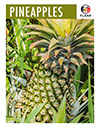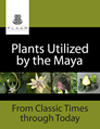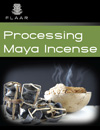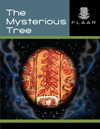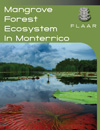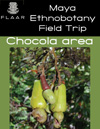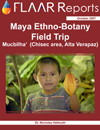Foods of the Maya; edible root crops: jicama, Mexican yam bean, Pachyrhizus erosus
Jicama is called Mexican yam bean because it’s a vine with a seed pod which looks like a bean seed pod. But it is the root of jicama which is eaten.
Yuca and malanga are often available even in modern supermarkets in Guatemala. Camote is found everywhere in large quantities. Only once did we find jicama; perhaps August is not the ideal time of year.
 |
Jicama roots found in a modern supermarket in Guatemala City. |
Jicama is healthy, so like all fresh food (rather than processed food), jicama can be good for your diet. It has lots of Vitamin C, but frankly I find the camote much more of a Superfood: I eat camote two to three times every week.
PDF, Articles, Books on Pachyrhizus erosus, Jícama
- 1966
- Roots and the subsistence of the ancient Maya, Southwestern Journal of Anthropology 22: 251-79.
This article is on root crops in general, not just on jicama. The purpose of this article was to remind Mayanists that they should study more than just maize, beans, and squash. However he included one root crop, Canna indica, which all four of our Q’eqchi’ plant scouts/plant consultants say its root is not eaten: only the leaves are used to wrap tamales and comparable uses. Bronson used an earlier name, now just a synonym.
NOT available as a free download; very unfortunate. Would be appreciated if someone could scan it and make it available. Having to pay a commercialized company is not fair (since we estimate the author wrote so that students and interested people around the world could learn from his research).
- 2001
- Comportamiento físico-químico durante el desarrollo del tubérculo de jícama (Pachyrhizus erosus). Universidad Autónoma de Nuevo León. 186 pages.
Available online:
http://eprints.uanl.mx/6674/1/1080124312.PDF
- 2000
- Utilización de jicama (Pachyrhizus erosus) en la elaboración de pan blanco para favorecer su calidad nutricia. Universidad Autónoma de Nuevo León. 105 pages.
Available Online:
http://eprints.uanl.mx/724/1/1020135234.PDF
- 2016
- Biología reproductive y apifauna visitante de la Jícama Pachyrhizus erosus (L.) Urban: (Fabaceae- Papilonoideae) en Yucatán. Universidad Autónoma de Yucatán. 80 pages.
Available Online:
www.academia.edu/26161440/Biolog%C3%ADa_reproductiva
y_apifauna_visitante_de_la_J%C3%ADcama_Pachyrhizus
erosus_L_Urban_Fabaceae-Papilionoideae_MAESTRA
EN_CIENCIAS_AGROPECUARIAS
- 2014
- Physicochemical Characteristics of Yam Bean (Pachyrhizus erosus) Seed Proteins. Journal of Food Research. Vol. 3, No. 6. Pages 168-178.
Available Online:
www.researchgate.net/publication/270278870_Physicochemical
Characteristics_of_Yam_Bean_Pachyrhizus_erosus
Seed_Proteins?ev=srch_pub
- 2012
- Hierba mora, Chipilín, Jícama y Bledo. Para alimentarse con calidad y economía. Editorial Universitaria de San Carlos de Guatemala. 107 pages.
Available Online:
www.csuca.org/documentos_csuca/libros/HierbaMoraChipil%C3
%ADnJ%C3%AD camayBledo1.pdf
Note: Jícama information is available on chapter V, pages 46-59.
- 1995
- Investigación en jicama (Pachyrhizus erosus) Y su potencial para el desarrollo agrícola de la región. Agronomía Mesoamericana. Vol. 6, No. 1. Pages 1-6.
Available Online:
www.mag.go.cr/rev_meso/v06n01_001.pdf
- 2001
- Characterzation of Yam Bean (Pachyrhizus erosus) Proteins. J. Agric. Food Chem. Vol. 49, No. 3. Pages 1512-1516.
Available Online:
www.researchgate.net/publication/12021688_Characterization_of
Yam_Bean Pachyrhizus_erosus_Proteins
- 2006
- Nutritional and anti-nutritional components in Pachyrhizus erosus L. tuber. Food Chemistry. No. 102. Pages 1112-1118.
Available Online:
www.researchgate.net/publication/222317517_Nutritional_and_anti-nutritional_components_in_Pachyrhizus_erosus_L_tuber
- 1993
- Las jicamas silvestres y cultivadas (Pachyrhizus spp.) Centro Agronómico Tropical de investigación y enseñanza (CATIE). 83 pages.
Available Online:
http://orton.catie.ac.cr/repdoc/A11038e/A11038e.pdf
- 1999
- Caracterización morfológica y agronómica de 14 cultivares de jicama (Pachyrhizus erosus L.), en 3 sitios altitudinales de Guatemala. Universidad de San Carlos de Guatemala. 95 pages.
Available Online:
http://fausac.usac.edu.gt/tesario/tesis/T-01794.pdf
- 2001
- Rendimiento y características sensoriales de jícama (Pachyrhizus erosus (L.) Urban) a diferentes días a cosecha, bajo condiciones del centro experimental docente de la facultad de agronomía. Universidad de San Carlos de Guatemala. 98 pages.
Available Online:
http://fausac.usac.edu.gt/tesario/tesis/T-01940.pdf
- 1996
- Yam bean (Pachyrhizus DC.). Promoting the conservation and use of underutilized and neglected crops. 2. Institute of Plant Genetics and Crop Plant Research. 143 pages.
This remains as one of the most complete discussions of jicama, though his focus is worldwide and also on two species confined to Latin America (in other words, there is not a pointed focus on jicama of Mesoamerica). Nonetheless this book is essential reading.
Available Online:
www.bioversityinternational.org/uploads/tx_news/Yam_bean
Pachyrhizus_DC._311.pdf
- 2009
- Fijación biológica de nitrógeno y rendimiento de la Jícama en el centro de México. Agricultura Técnica en México. Vol. 35, No. 3. Pages 277-283.
Available Online:
www.researchgate.net/publication/262709729_Fijacion_biologica de_nitrogeno_y_rendimiento_de_la_jicama_en_el_centro
de_Mexico?ev=srch_pub
Suggested webpages with photos and information on Pachyrhizus erosus
www.conabio.gob.mx/malezasdemexico/fabaceae/pachyrhizus-erosus/fichas/ficha.htm
Information.
http://teca.fao.org/es/read/3684
Information.
http://tropical.theferns.info/viewtropical.php?id=Pachyrhizus+erosus
Information and photos.
www.theplantlist.org/tpl1.1/record/ild-2918
Synonyms.
http://davesgarden.com/guides/pf/go/69413/#b
Photos.
www.gbif.org/species/2974683
Map location and photos.
First posted, early September, 2017.








